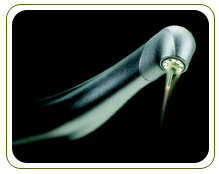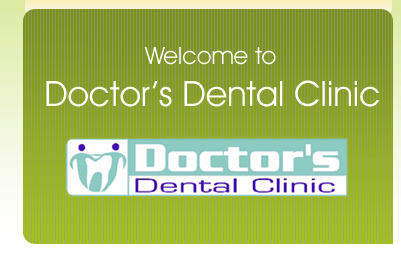Laser dentistry is a new technique that can improve
the precision of your treatment while minimizing
pain and recovery time.
Laser dentistry can be
a precise and effective way to perform many dental
procedures. The potential for laser dentistry allows
for treatment of a highly specific area of focus
without damaging surrounding tissues.
If you consider
yourself somewhat of an anxious dental patient and
are seeking extreme safety and comfort, you might
consider looking for laser dentistry techniques for
treatments.

Benefits of Laser Dentistry
Here are some of the major benefits associated with
laser dentistry:
|
� |
Procedures performed using soft tissue
dental lasers may not require sutures
(stitches). |
|
� |
Certain laser dentistry procedures do not
require anesthesia. |
|
� |
Laser dentistry minimizes bleeding because
the high-energy light beam aids in the
clotting (coagulation) of exposed blood
vessels, thus inhibiting blood loss. |
|
� |
Bacterial infections are minimized because
the high-energy beam sterilizes the area
being worked on. |
|
� |
Damage to surrounding tissue is minimized. |
|
� |
Wounds heal faster and tissues can be
regenerated. |
|
|
|
Application of Laser Dentistry

The application of lasers in dentistry opens the
door for dentists to perform a wide variety of
dental procedures they otherwise may not be capable
of performing. Dentists using lasers in dentistry
have become adept at incorporating the
state-of-the-art precision technology into a number
of common and not-so-common procedures.
Hard Tissue (Tooth) Laser Dentistry Procedures
|
� |
Cavity Detector: Low intensity soft tissue
dental lasers may be used for the early
detection of cavities by providing a reading
of the by-products produced by tooth decay. |
|
� |
Dental Fillings/Tooth Preparation: Hard
tissue dental lasers may eliminate the need
for a local anesthetic injection and the
traditional turbine dental drill. Lasers
used in dental filling procedures are
capable of killing bacteria located in a
cavity, potentially leading to improved long
term tooth restorations. However, dental
lasers are not appropriate for the
replacement of amalgam fillings, onlays or
crowns. |
|
� |
Tooth Sensitivity: Dental lasers may be used
to seal tubules (located on the root of the
tooth) that are responsible for hot and cold
tooth sensitivity. |
Soft Tissue (Gum) Laser Dentistry Procedures
|
� |
Crown Lengthening: Dental lasers can reshape
gum tissue (soft tissue laser) and bone
(hard tissue laser) to expose healthier
tooth structure. Referred to as crown
lengthening, such reshaping provides a
stronger foundation for the placement of
restorations. |
|
� |
Gummy Smile: Dental lasers can reshape gum
tissue to expose healthy tooth structure and
improve the appearance of a gummy smile. |
|
� |
Muscle Attachment (Frenula): A laser
frenectomy is an ideal treatment option for
children who are tongue tied (restricted or
tight frenulum) and babies unable to breast
feed adequately due to limited tongue
movement. A laser frenectomy may also help
to eliminate speech impediments. |
|
� |
Soft Tissue Folds (Epulis): Dental lasers
may be used for the painless and suture-free
removal of soft tissue folds often caused by
ill-fitting dentures. |





